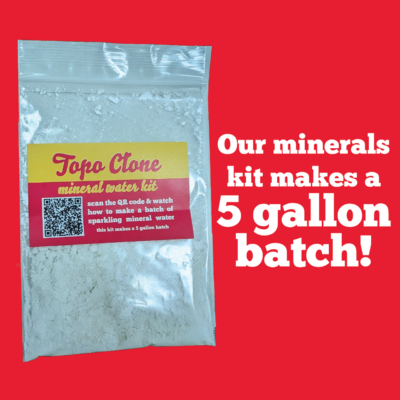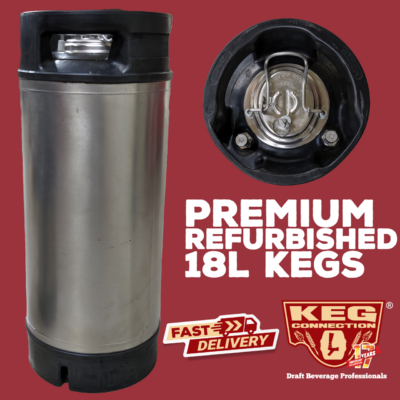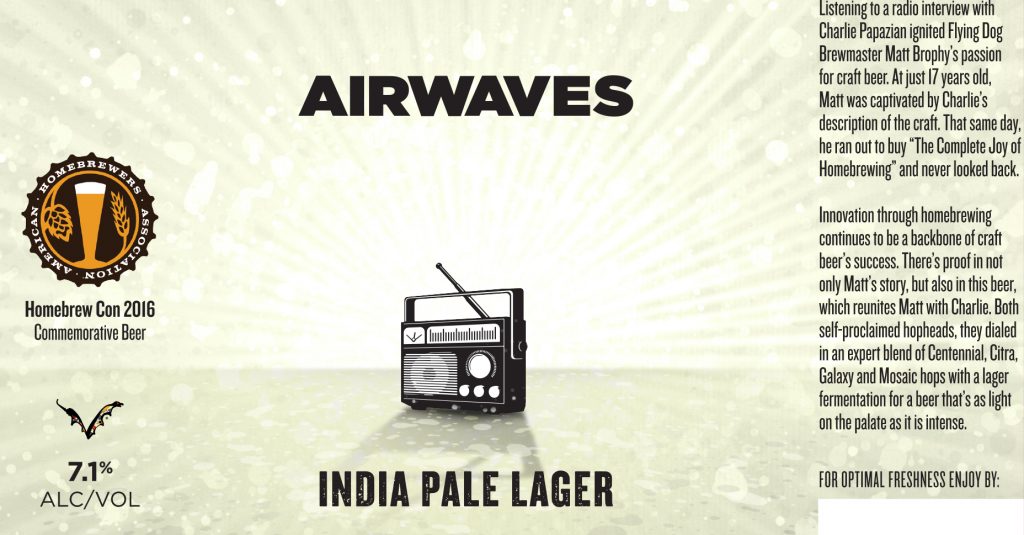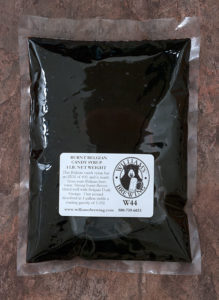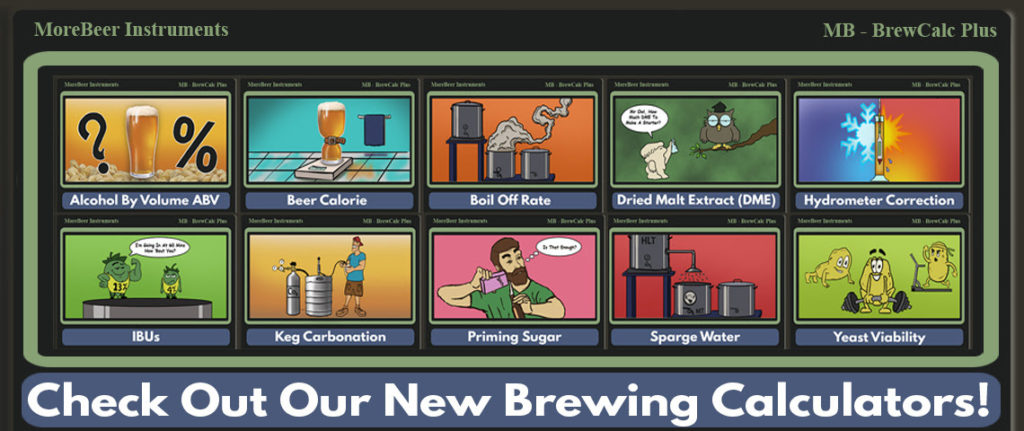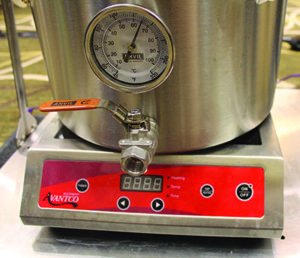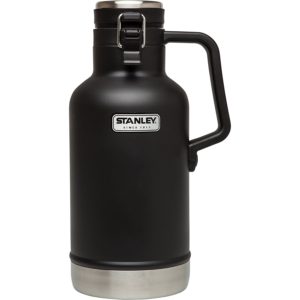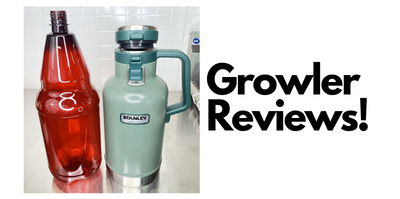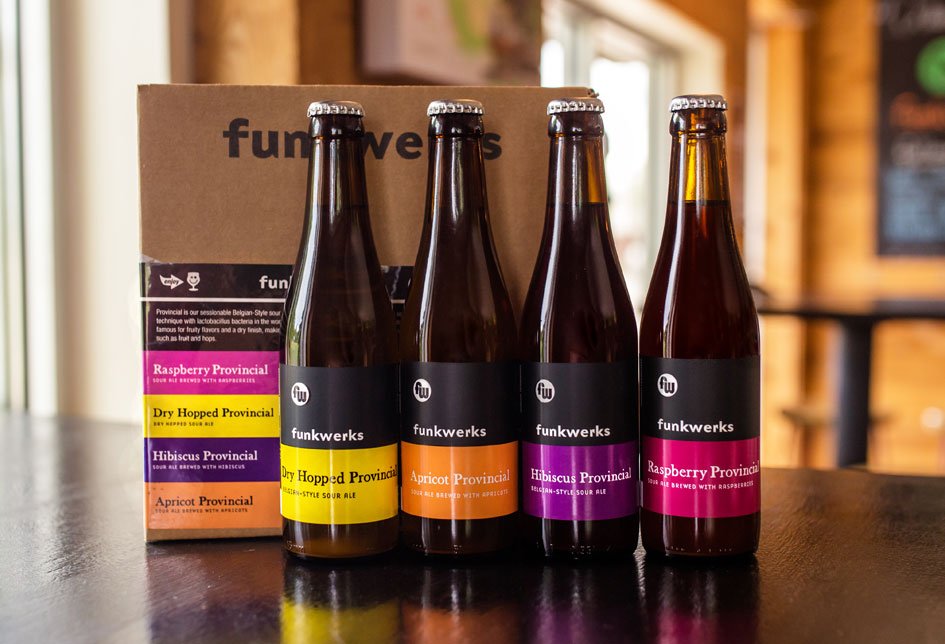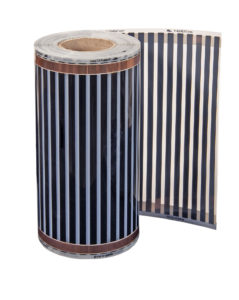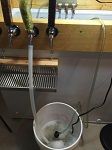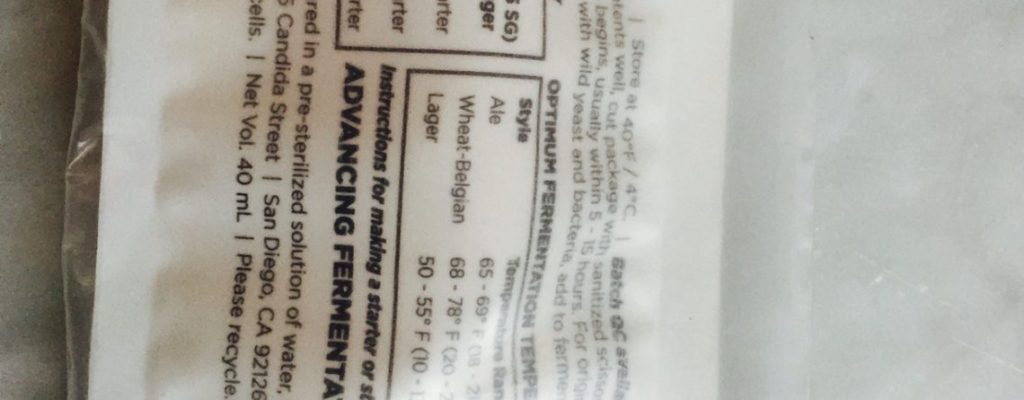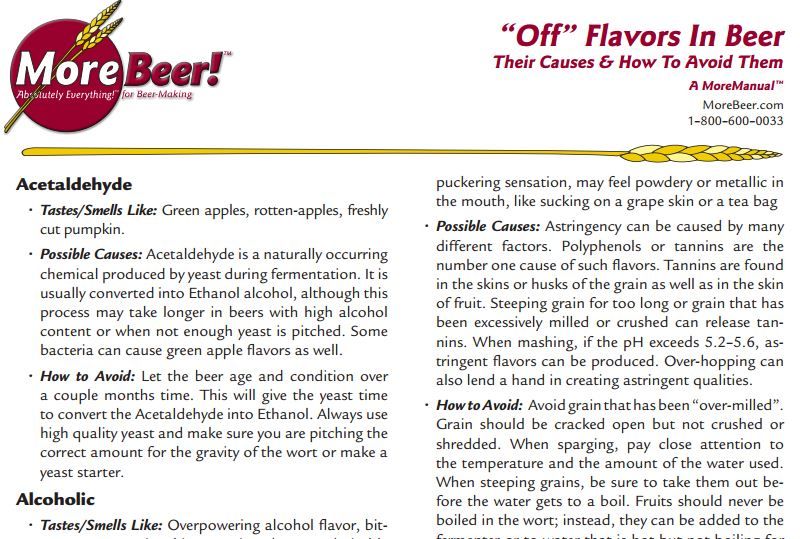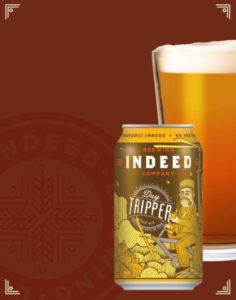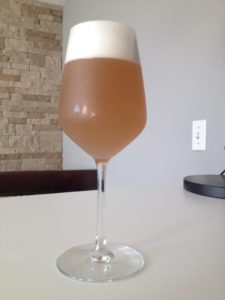
Topo Chico Seltzer Water Clone Recipe

via Homebrew Happy Hour/Keg Connection:
Topo Chico is a delicious sparkling mineral water known for it’s taste and BITE. My favorite thing about Topo Chico is the carbonic bite it provides, so I recommend carbing and serving this at 35psi or even higher! Below is a list of the ingredients needed to mimic the exact water profile of Topo Chico:
All ingredients below can be purchased at MoreBeer!’s website
Topo Chico Clone (5 Gallon)
Ingredients
5.15 grams of gypsum
0.85 grams of calcium chloride
1.10 grams of of Epsom salt
0.85 grams of magnesium chloride – search Amazon
0.85 grams of canning salt – search Amazon
0.90 grams of slaked lime – search Amazon
0.95 grams of baking soda – search Amazon
0.90 grams of chalk
Weigh out your minerals and then mix it into your cold RO or distilled water. For best results, we recommend that you mix your water BEFORE carbonating. We force carbonate and serve our water at 35psi.
This recipe is intended to be used with reverse osmosis or distilled water. Adding these minerals to your city or well water WILL NOT RESULT in an accurate Topo Chico clone due to the existing minerals in your water supply.
Or… Ready Made Kit
Also:
- Keep it on draft!! Kegging Kits at Keg Connection
- Search Amazon for digital gram scale – look for something that has .001 gram resolution
+ Keg Connection Says… ⭐⭐⭐⭐⭐ The Reviews Are In – BEST KEGS EVER
18+ Liter Ball Lock Keg | Fully Remanufactured (AEB/SAFER/Cornelius) | SEE DESCRIPTION
More InfoFrom the product description, check product page for current description, price and availability:
18+ Liter Ball Lock Keg | Fully Remanufactured (AEB/SAFER/Cornelius)
These are top-tier, refurbished Corny kegs made of stainless steel. With stainless steel costs climbing and high-quality used kegs becoming increasingly scarce, this is an offer you won’t want to overlook.
Every keg in our collection undergoes a comprehensive refurbishment process. This includes deep cleaning, machine polishing, and the replacement of o-rings on the lid, PRV, as well as liquid and gas dip tubes, in addition to two o-rings on each post. These kegs are all sourced from elite brands, including AEB, SAFER, and CORNELIUS.
Additional Information on Our Refurbished Kegs:
Though these kegs are pre-owned, they may exhibit minor cosmetic imperfections such as small dings and scratches that couldn’t be completely polished away. None of these issues impact their functionality.
After the cleaning and polishing operations, some residue might be present on either the keg’s exterior or its rubber components. While it may transfer onto your hands, this is merely a reminder that all kegs—whether new or used—need to be meticulously cleaned before usage. Proper sanitization is also crucial before filling them with any beverage.
A subset of these kegs has experienced sun damage to the rubber areas, affecting the seal. This could lead to the formation of black marks, particularly when the rubber is wet, although this is less likely when it’s dry.
Lastly, you might find some kegs with double o-rings on their posts. While this may appear out of the ordinary, rest assured they function as effectively as those with single o-rings.
Diameter: 8-7/8″ (225mm)
Height: 22-1/4″ (565mm)
Weight: 9 lbs 9oz (4.34kg)
Volume: 4.75 gallons (18 liters) but some are also slightly more in full volume
Post Thread Size: 9/16-18 UNF Thread on both the IN and Out.
The fact is… the era of cheap and readily available used homebrew kegs is… done. I could give you a bunch of reasoning behind that opinion including one of the best sources for used kegs… de-listing used kegs, but I’ve got a regularly updated article on the topic you can check out.
Keg Connection Says…
“People have been receiving these new PREMIUM REMANUFACTURED KEGS and already love them! That’s because there hasn’t been a used keg on the market in this good of condition, EVER. They’re ‘used’ in a literal sense but each of these kegs has undergone an extensive refurbishing process. They have been meticulously cleaned, machine-polished, and fitted with new o-rings including the lid, pressure relief valve, and both liquid and gas dip tubes. Plus, we’ve added two new o-rings on each post.”
- *Premium Cornelius Keg – or Firestone, 5 Gallon, Ball Lock “PREMIUM GRADE”
- 9+ Liter Ball Lock Keg | Fully Remanufactured (AEB/SAFER/Cornelius)
- Premium Refurbished AEB 5 Gallon Ball Lock Keg, Rubber Handle
- Premium Refurbished AEB 5 Gallon Ball Lock Keg, Single Metal Handle
- Complete Lineup
About Homebrew Happy Hour: Homebrew Happy Hour started as a podcast in 2015, but has evolved into a complete resource for homebrewers with thorough articles, how to videos, and much more. Originally hosted by Joshua Steubing and the founder/President of Kegconnection.com, Todd Burns. In 2016 we added James Carlson, Director of Operations at CMBecker, as a main cohost in our lineup, and we frequently feature guest hosts from time to time.
This post may contain affiliate links. We may make a commission when you use our links. This will never cost you extra. Thank you for supporting Homebrew Finds!
Price, promotions and availability can change quickly. Check the product page for current price, description and availability. tag:lnksfxd rp:kctopochico
